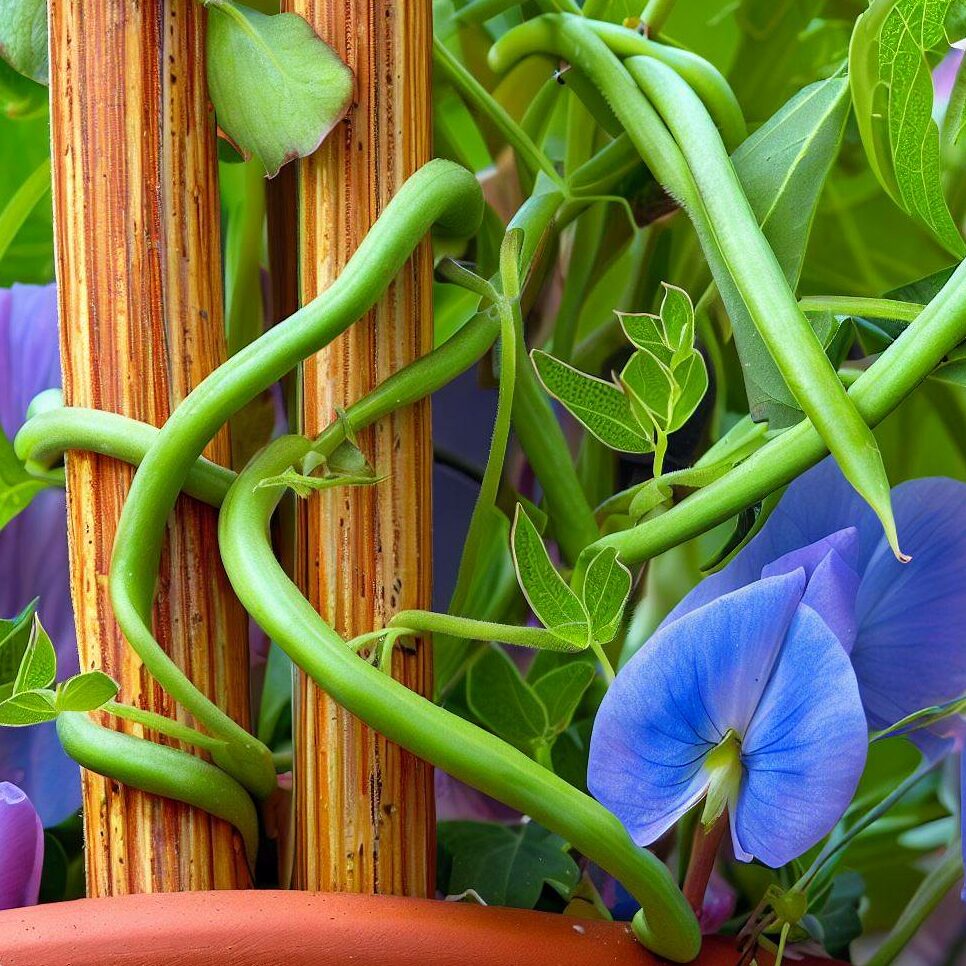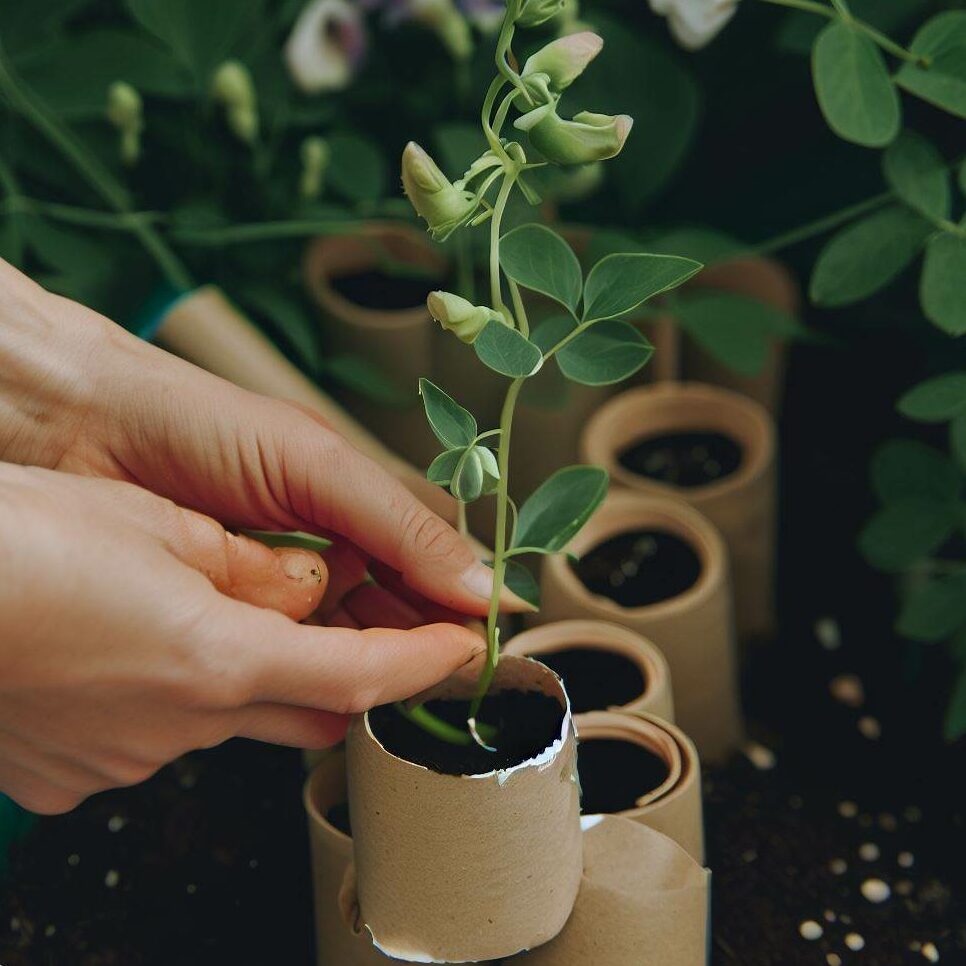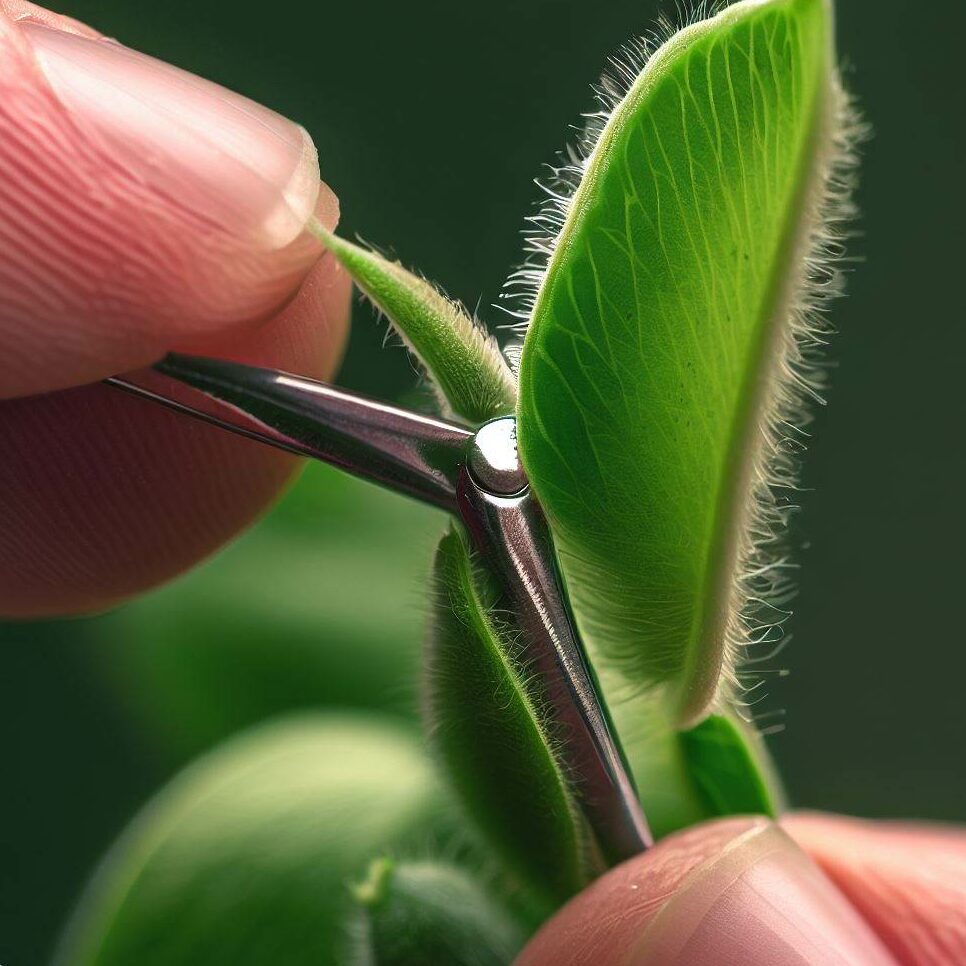Sweet peas are a gardener’s delight, known for their vibrant colors and intoxicating fragrance. But what if you’re short on garden space?
Planting sweet peas in pots involves selecting a deep, well-drained pot, filling it with nutrient-rich soil, and sowing seeds or seedlings. Regular watering, sunlight, and occasional pinching out ensure bushy growth and abundant blooms. This method allows garden enthusiasts with limited space to enjoy these fragrant flowers.
Best Pots for Sweet Peas
Not all pots are created equal, especially when it comes to sweet peas. These plants love a good amount of root space, so choosing a deep pot is key. A depth of at least 12 inches is ideal, but if you can go deeper, even better.
Material-wise, both plastic and terracotta pots can work. Plastic pots are lightweight and retain moisture well, but they can become quite hot in the summer. Terracotta pots, on the other hand, are heavier and more stable, and they offer excellent breathability for the roots. However, they can dry out more quickly, so you’ll need to keep a close eye on the soil moisture.

Here are a few more tips to help you choose the best pot for your sweet peas:
- Size Matters: Sweet peas are climbers, so a tall, narrow pot is better than a short, wide one. This gives the roots plenty of room to grow and the vines plenty of space to climb.
- Drainage is Key: Make sure your pot has good drainage holes. Sweet peas dislike waterlogged soil, and good drainage will help prevent root rot.
- Consider the Weight: If you plan to move your pot around, consider its weight. Terracotta pots are heavy, especially when filled with soil and water. Plastic pots are lighter and easier to move.
🌿 Pea Pointer: If you’re using a terracotta pot, soak it in water for a few hours before planting. This will prevent it from absorbing water from the soil, ensuring your sweet peas get all the moisture they need. 🌿
Using Bamboo Stakes for Sweet Peas in Pots
Sweet peas are climbing plants and they need support to grow vertically. Bamboo stakes are an excellent choice for this purpose. They are sturdy, natural, and blend well with the plants, providing an unobtrusive support system.
Here’s how you can use bamboo stakes in your sweet pea pot:
- Select the Right Stakes: Choose bamboo stakes that are at least 6 feet tall. This height gives your sweet peas plenty of room to climb and flourish. The stakes should also be thick enough to support the weight of the plant as it grows.
- Placement of Stakes: Place the stakes in the pot at the time of planting. It’s easier to install the stakes before the sweet peas start growing, and it reduces the risk of damaging the roots later on. Arrange the stakes around the edge of the pot, spacing them evenly.
- Creating a Support Structure: Tie the tops of the stakes together to create a teepee-like structure. This gives the sweet peas a sturdy and extensive framework to climb on. You can use garden twine or soft ties to secure the stakes together.
- Training the Sweet Peas: As the sweet peas start to grow, gently wrap the tendrils around the bamboo stakes. This encourages the plants to climb the stakes. Be careful not to damage the delicate tendrils.
- Regular Check: Regularly check the stakes to ensure they are still sturdy and haven’t been loosened by wind or the weight of the plant. If necessary, add more ties to secure the stakes.

Remember, the goal is to provide your sweet peas with a strong and reliable support system that allows them to grow upwards freely. Bamboo stakes are a simple and effective way to achieve this in a pot.
Growing Sweet Peas in Toilet Rolls
Growing sweet peas in toilet rolls is an ingenious gardening hack that’s both eco-friendly and effective. It’s a method I’ve personally used with great success.The toilet rolls act as mini pots that can be planted directly into the ground or larger pots, reducing transplant shock and promoting healthier root development.
Here’s a step-by-step guide on how to do it:

- Collect Toilet Rolls: Start saving your toilet rolls. You’ll need one for each sweet pea seed you plan to sow.
- Prepare the Toilet Rolls: Stand the toilet rolls upright in a tray. Fill each one with potting soil. But what kind of potting soil for sweet peas? A well-draining, nutrient-rich potting mix is ideal.
- Sow the Seeds: Place a sweet pea seed on top of the soil in each toilet roll. Then, cover it with a bit more soil.
- Water and Wait: Water the seeds gently and place the tray in a sunny spot. In a few weeks, you’ll see the magic happen as the seeds sprout and start to grow.
🌿 Pea Pointer: Toilet rolls are (usually) biodegradable. When your sweet peas are ready to be transplanted, you can plant the whole roll into the ground or a larger pot. The roll will decompose naturally, and the roots of the sweet peas will grow through it. 🌿
Now, you might be wondering, can this method be used for other types of sweet peas? Absolutely! Whether you’re growing dwarf sweet peas in containers or sweet peas in hanging baskets, starting them in toilet rolls works wonderfully.
And if you’re not keen on starting from seeds, you can always find sweet peas in pots for sale. These are a great option if you want to skip the germination process and get straight to the growing part.
Growing sweet peas in toilet rolls is a fun and rewarding gardening project. It’s a testament to the fact that sometimes, the simplest methods are the most effective.
When to Pinch Out Sweet Peas
One of the key steps in growing sweet peas successfully is knowing when and how to pinch out the plants. This might sound a bit harsh, but it’s actually a beneficial practice that encourages bushier growth and more blooms.
The best time to pinch out sweet peas is when they have about 2-3 pairs of leaves. This usually happens a few weeks after germination. But what if you’ve missed this window? Is it too late to pinch out sweet peas? Not necessarily. You can still pinch out sweet peas a bit later, but the earlier you do it, the better.
Here’s a step-by-step guide on how to pinch out sweet peas:

- Identify the Right Time: Look for the point where the stem of the sweet pea plant has two or three pairs of leaves.
- Pinch Out the Tip: Using your fingers or a pair of clean scissors, pinch or cut off the tip of the stem just above the top pair of leaves.
- Monitor the Plant: After pinching, two new stems should grow from where you made the cut. This will result in a bushier plant with more flowers.
🌿 Pea Pointer: How often to pinch out sweet peas? Usually, pinching out is done once when the plant is young. However, if the plant becomes leggy or overgrown later in the season, you can pinch out the tips again to encourage bushier growth. 🌿
Speaking of leggy plants, let’s talk about leggy sweet pea seedlings. This is a common issue where the seedlings grow tall and spindly instead of bushy. It’s often caused by insufficient light. If you’re facing this issue, try moving your seedlings to a sunnier spot. Pinching out can help leggy seedlings become bushier.
Now, you might be wondering, how tall do sweet peas grow? Well, it depends on the variety. Some dwarf varieties stay compact at about 1-2 feet tall, perfect for pots. But most sweet peas are climbers and can reach heights of 6-8 feet or even more, especially if they’re given a trellis or support to climb.
Growing sweet peas is a journey, and pinching out is an important part of that journey. It might seem counterintuitive to cut off part of your plant, but trust me, your sweet peas will reward you with lush, bushy growth and an abundance of fragrant flowers. So, don’t be afraid to pinch!
Do Sweet Peas Need Full Sun?
Sunlight and water are two crucial elements for the growth of any plant, and sweet peas are no exception. But do sweet peas need full sun? And how much water do sweet peas need? Let’s explore these questions in detail.
Sweet peas love the sun. They thrive in locations that receive at least 6-8 hours of sunlight each day. However, they also appreciate a bit of afternoon shade, especially in hotter climates. This helps protect them from the intense midday heat, which can sometimes be too much for these delicate climbers.
But what if your garden is a bit on the shady side? Will sweet peas bloom in shade? While sweet peas prefer full sun, they can tolerate partial shade. However, they may not bloom as profusely in shady conditions. So, if you’re planting sweet peas in a less sunny spot, choose a variety that’s known for its shade tolerance.

Now, do sweet peas prefer morning or afternoon sun? Sweet peas appreciate the cooler temperatures of morning sun. The gentle morning light helps them start their day, while the afternoon shade protects them from the harsher heat. However, they can adapt to a range of sunlight conditions, as long as they get their daily dose of sun.
As for watering, sweet peas like a consistently moist, but not waterlogged, soil. A deep watering once or twice a week is usually sufficient. However, in hot weather or if you’re growing sweet peas in pots, you might need to water more frequently. The key is to keep the soil moist, but not soggy.
🌿 Pea Pointer: To check if your sweet peas need water, stick your finger about an inch into the soil. If it feels dry, it’s time to water. If it feels moist, you can wait another day or two. 🌿
In conclusion, while sweet peas love the sun, they’re also quite adaptable. They can tolerate a bit of shade and can adjust to different sunlight conditions. And with regular, deep watering, they’ll reward you with an abundance of fragrant, colorful blooms.
Sweet Pea FAQ
Q: Can sweet peas be grown indoors?
A: Yes, sweet peas can be grown indoors with sufficient light and care.
Q: Are sweet peas toxic to pets?
A: Some varieties of sweet peas can be toxic to pets if ingested.
Q: How long does it take for sweet peas to bloom?
A: Sweet peas typically bloom about 8-12 weeks after sowing.
Q: Can sweet peas survive frost?
A: Young sweet pea plants can tolerate light frost, but severe frost can damage them.
Q: Do sweet peas attract bees?
A: Yes, sweet peas are known to attract bees and other pollinators.

[…] for their fragrant blooms and vibrant colors. If you’re a gardener who loves the idea of planting sweet peas in pots, you might wonder if they come back every year or if they require replanting. In this article, we […]